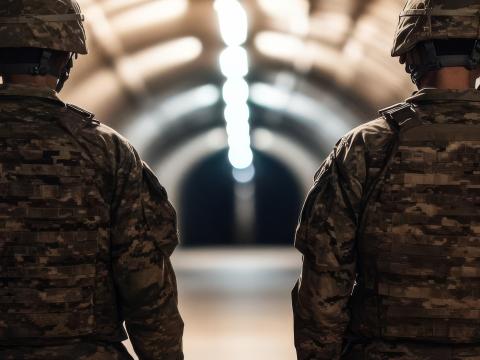Exoskeletons Climb to New Heights
A new computer-controlled exoskeleton is now available to help warfighters carry heavy equipment in physically challenging environments. The FORTIS Knee Stress Release Device (K-SRD) features military-specification batteries approved for infantry use, improved control box ergonomics and faster actuators that generate more torque.
Using Dermoskeleton bionic augmentation technology developed by B-Temia Incorporated, the device increases leg capacity for tasks that require repetitive or continuous kneeling, squatting, lifting, dragging, carrying or climbing with heavy loads.
Exhaustion and injury often prevent soldiers from continuing a mission that requires traversing rough terrain, stairs and underground infrastructure. To alleviate these issues, sensors on the computer-controlled exoskeleton convey a warfighter’s speed, direction and angle of movement to an onboard computer that drives electromechanical actuators at the knees. As a result, it can deliver the right torque at the right time to assist knee flex and extension, reducing the energy needed to navigate challenging terrain as well as to squat or kneel.
Lockheed Martin developed the upgraded device based on soldier feedback on the initial design. Versions of the exoskeleton are available for industrial workers and first responders who also must perform strenuous tasks in difficult environments.
Development of the current iteration began in 2000 at the Berkeley Robotics and Human Engineering Laboratory. Lockheed Martin took the technology the next step under an exclusive licensing agreement with Ekso Bionics and developed it for the U.S. Army Natick Soldier Research Development and Engineering Center. In a series of tests, the center evaluated the potential for the technology in the field.





Comments